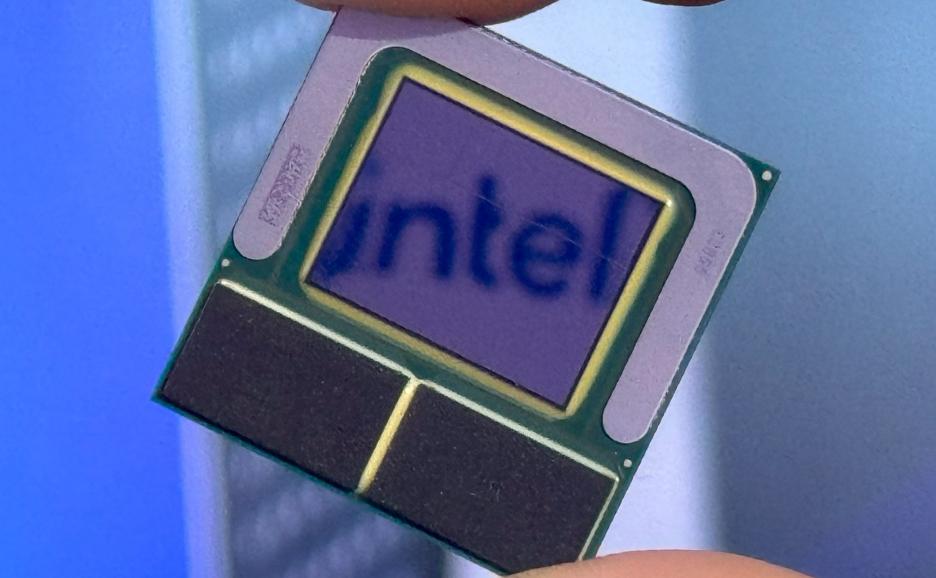This year’s Computex in Taiwan, arguably the largest and most influential PC trade show in the world, saw Intel unveil more details about its Lunar Lake processor during CEO Pat Gelsinger’s keynote. I was personally surprised that Intel didn’t lead with Lunar Lake and PCs during Gelsinger’s presentation, considering that Computex is predominantly a PC-oriented show. Instead, it led with data center and server AI products, which I believe was a mistake because most people’s focus at the show is on PCs. But it seems clear there was an executive decision on Intel’s part to talk up its competition with NVIDIA.
Just before Computex, I had the opportunity to attend Intel’s Tech Tour in Taiwan, the company’s third such architectural briefing series around the world. The purpose of these tours is to showcase Intel’s latest innovations and shine a light on the local Intel teams that make its global success possible. Last year’s Meteor Lake processor briefing was held in Penang, Malaysia, where the company does a lot of its packaging and testing. Taiwan is strategically important for Intel because it is the heart of the PC ecosystem, and all PC vendors have a significant presence there.
Lunar Lake And x86’s Competition
Lunar Lake is Intel’s best bet to compete with the rising threat of Arm-based architectures, especially those coming from Apple and Qualcomm, which deliver both high performance and efficiency for laptops. While AMD also offers some competition, its AI processors have been positioned more for high performance than low power consumption. Lunar Lake’s specs and design also align with Microsoft’s vision of what makes a Copilot+ PC.
To accomplish all this, Lunar Lake is not just another incremental improvement over Intel’s previous designs; it is a radical departure for the traditional x86 paradigm that has dominated the PC industry for decades. At a platform level, Lunar Lake is an evolution from last generation’s Meteor Lake with further improvements to performance and efficiency and a continuation of its advanced packaging design. This includes the introduction of on-package memory.
One of Intel’s most important ingredients in accomplishing this task was radically changing how it implemented its different types of CPU cores. Lunar Lake is a significant departure because it focuses on power efficiency and does so by prioritizing a cluster of four Skymont efficiency cores (sometimes called E-cores) over Lion Cove performance cores (P-cores) for most tasks. By isolating the efficiency cores into a four-core cluster, Intel is also able to keep as many workloads as possible on the smaller, more efficient cores before lighting up the bigger, more power-hungry performance cores.
One of Intel’s engineering achievements for Lunar Lake is that in certain workloads Skymont’s single-threaded performance is anywhere from 38% to 68% faster than the last generation. Not only that, but the new Skymont cores are much more dynamic, delivering the same performance at one-third the power, 70% greater performance at the same power or even 2x the performance at marginally higher power. The four-core cluster can deliver up to 2.9x the performance of two of Meteor Lake’s E-cores at the same power.
These new E-cores are so performant that they are effectively on par with earlier Raptor Cove performance cores found in Intel’s 13th and 14th Gen desktop CPUs. The Lion Cove P-cores also deliver a 14% uplift over their Redwood Cove counterparts in Meteor Lake, making them the fastest cores in the CPU. Intel has architected these cores’ power and performance curves to overlap perfectly, maximizing the performance and power efficiency of the SoC. The next generation of Thread Director is designed to make sure that workloads are appropriately sent to the right cores, optimizing for efficiency and prioritizing the E-cores for the first time ever.
Going Big On Graphics And AI
Lunar Lake is Intel’s first implementation of its second-generation GPU architecture, dubbed Xe2. This is the same GPU architecture planned for the company’s much-anticipated discrete Battlemage GPUs that are expected to ship soon. Intel says that the new Xe2 architecture is 50% faster than its predecessor inside of Meteor Lake and features new XMX engines, which increase AI performance to 67 TOPS. Intel has also spent the last year working on improving graphics drivers for its Xe family of GPUs, which means that the Xe2 architecture will come out of the gate much more optimized for most games, including older titles.
This, paired with the expected 48 TOPS from the NPU on the same SoC, delivers well over 100 TOPS of platform AI performance, which makes for a nice statistic but will almost never be possible to utilize all at once. The important part is that the NPU and GPU are each quite performant and can deliver high-end AI experiences that developers want their users to have. What’s more important is how efficiently the GPU and NPU deliver this level of performance—and how that preserves battery life. Intel says that its fourth-generation NPU is twice as performant at the same power as the last generation and capable of four times as much peak performance.
Lunar Lake Connectivity And Security Features
While Intel is best known for its CPUs, the company is also very experienced in connectivity. With Lunar Lake, Intel has made some significant strides in Wi-Fi and Bluetooth, including integrating the logic for Wi-Fi 7 and Bluetooth while splitting out a module just for RF. The Wi-Fi 7 solution is capable of 5.8 gigabits of throughput using a unique low-cost single-radio design. With Wi-Fi and Bluetooth logic integrated, the combined RF module reduces the size of the implementation by 28% compared to last generation’s solution. Intel also uses this Wi-Fi and Bluetooth solution to power its Unison technology for multi-device interactions.
For wired connectivity, Intel has integrated four 40 Gb/s Thunderbolt 4 connections directly into Lunar Lake. Thunderbolt has become even more powerful with newly introduced features including Thunderbolt Share. It also has additional connectivity options via built-in 4x PCIe Gen5 lanes and 4x PCIe Gen4 lanes. These PCIe lanes are mostly for storage, though they can also accommodate a 5G modem or something else that needs a PCIe connection.
To secure all this connectivity, Intel has implemented a new partner security engine that supports Microsoft Pluton security technology. Intel has also leveraged the NPU for enhanced security with partners such as Trend Micro and Crowdstrike, which are both reporting improved performance for Lunar Lake. Moving security and other features to the NPU also frees up the CPU for other tasks. Crowdstrike reported a 73% reduction in inference time, while Bufferzone reported a 91% reduction in cost moving to on-device usage.
What Comes Next For Intel
As noted above, Lunar Lake is Intel’s best bet to keep itself relevant in an environment rich with competition from Apple and Qualcomm, not to mention AMD. While we must reserve final judgment on Lunar Lake until products ship roughly in the September/October timeframe, there is a clear indication from Intel’s disclosures during the Intel Technology Tour Taiwan that the company believes it has something competitive, especially because of Lunar Lake’s 40% lower SoC power. On paper it seems that Intel does have a product worthy of the competition, but the real challenge will be getting Lunar Lake out in volume—at the same time that Intel’s next-generation Arrow Lake Core Ultra processor is slated to become available with a vastly different value proposition and performance profile.
While I believe that Lunar Lake will be a competitive low-power platform, its lack of scalability could prove a challenge for Intel when needing to scale up to higher-performance platforms. I also believe that Panther Lake should solve many of those problems for Intel, but that is firmly a 2025 product.
One of the biggest unknowns is when Lunar Lake will get certified for Windows Copilot+, because currently that distinction is only for Qualcomm’s Snapdragon X Plus and Snapdragon X Elite chips. While there is no certainty around that certification today, Intel seems confident that it will be able to sell Lunar Lake PCs with Copilot+ capability in the Q4 2024 timeframe. Achieving that will be a major test for Lunar Lake’s competitiveness and Intel’s ongoing relevance at the cutting edge of the PC market.
Read the full article here









